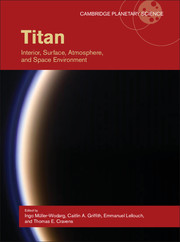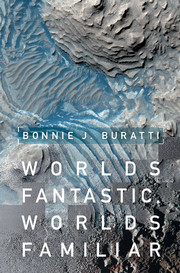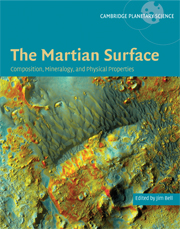Titan
Titan, the largest of Saturn's moons, shares remarkable similarities with Earth. Its thick atmosphere is composed primarily of nitrogen; it features the most complex organic chemistry known outside of Earth and, uniquely, hosts an analog to Earth's hydrological cycle, with methane forming clouds, rain and seas. Using the latest data from the ongoing Cassini–Huygens missions, laboratory measurements and numerical simulations, this comprehensive reference examines the physical processes that shape Titan's fascinating atmospheric structure and chemistry, weather, climate, circulation and surface geology. The text also surveys leading theories about Titan's origin and evolution, and assesses their implications for understanding the formation of other complex planetary bodies. Written by an international team of specialists, chapters offer detailed, comparative treatments of Titan's known properties and discuss the latest frontiers in the Cassini–Huygens mission, offering students and researchers of planetary science, geology, astronomy and space physics an insightful reference and guide.
- Readers will gain a comprehensive understanding of how physical processes shape Titan's atmospheric structure, weather, climate, surface and circulation
- Explains the differences between Titan and similar planetary bodies, namely Mars and Earth
- Chapters are written by a team of international scholars familiar with the Cassini–Huygens missions to Titan
Reviews & endorsements
'This book can be highly recommended to Titan Buffs and indeed to all who cherish planetary science and space research and … should be considered for one's personal library.' The Observatory
Product details
May 2014Hardback
9780521199926
474 pages
285 × 220 × 27 mm
1.64kg
179 b/w illus. 35 colour illus. 31 tables
Available
Table of Contents
- Introduction I. C. F. Müller-Wodarg, C. A. Griffith, E. Lellouch and T. E. Cravens
- Prologue 1: the genesis of Cassini–Huygens W.-H. Ip, T. Owen and D. Gautier
- Prologue 2: building a space flight instrument: a P.I.'s perspective M. Tomasko
- 1. The origin and evolution of Titan G. Tobie, J. I. Lunine, J. Monteux, O. Mousis and F. Nimmo
- 2. Titan's surface geology O. Aharonson, A. G. Hayes, P. O. Hayne, R. M. Lopes, A. Lucas and J. T. Perron
- 3. Thermal structure of Titan's troposphere and middle atmosphere F. M. Flasar, R. K. Achterberg and P. J. Schinder
- 4. The general circulation of Titan's lower and middle atmosphere S. Lebonnois, F. M. Flasar, T. Tokano and C. E. Newman
- 5. The composition of Titan's atmosphere B. Bézard, R. V. Yelle and C. A. Nixon
- 6. Storms, clouds, and weather C. A. Griffith, S. Rafkin, P. Rannou and C. P. McKay
- 7. Chemistry of Titan's atmosphere V. Vuitton, O. Dutuit, M. A. Smith and N. Balucani
- 8. Titan's haze R. West, P. Lavvas, C. Anderson and H. Imanaka
- 9. Titan's upper atmosphere: thermal structure, dynamics, and energetics R. V. Yelle and I. C. F. Müller-Wodarg
- 10. Titan's upper atmosphere/exosphere, escape processes, and rates D. F. Strobel and J. Cui
- 11. Titan's ionosphere M. Galand, A. J. Coates, T. E. Cravens and J.-E. Wahlund
- 12. Titan's magnetospheric and plasma environment J.-E. Wahlund, R. Modolo, C. Bertucci and A. J. Coates.





